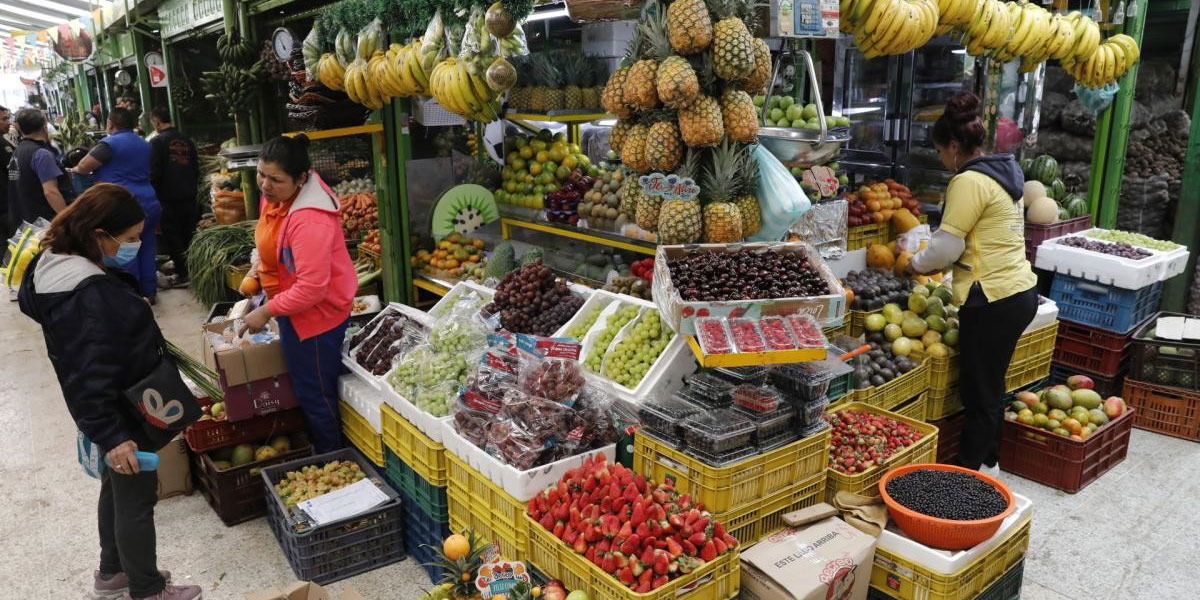Market squares are an inexhaustible source of colour, smell and flavor that preserve the cultural traditions of Latin America and transform the food heritage of a region that is beginning to give them the value it owes them and see in them a profitable tourism potential.
Although past generations stocked the refrigerators with products bought directly in the market squares, these spaces, attended mostly by small farmers and ranchers, were displaced by large and sophisticated stores that, however, lack the warmth of the town , which is precisely what makes Latin American supply centers so attractive to foreigners.
When walking through its corridors and receiving tastings of fruits, mixtures, fried foods, sweets and concoctions, always accompanied by a smile and the suggestive phrase of the seller “try it, without compromise!”, more and more tourists are undertaking the seductive task of discovering what Latin America tastes and smells like, and what color this part of the world is.
“After traveling this year through several countries in the region, I think that Latin America is green like an avocado (avocado), it tastes sweet like pineapple, and it smells fresh like mint or lemon,” Sara Thompson, from the Netherlands, told EFE. in the District Plaza of Mercado La Concordia, in Bogotá.
There, at the beginning of December, Harvesting Flavors took place, an initiative of the Warner Bros. Discovery conglomerate and the Food Network channel that invites people to return to the market places, to highlight the authenticity of Colombian food and the stories behind each one of its emblematic preparations, and which shows that its boom is already permeating international television and social networks.
Jungle chicken, soups such as mazamorra chiquita or ajiaco, and the popular bandeja paisa, made up of beans, rice, pork rinds, ground beef, chorizo, fried egg, ripe plantain slices, avocado and arepa, are part of the Creole delicacies that They were tasted in the third edition of the event.
For the Mexican cook Ximena Leal, who was part of the activity that included nine pairs of chefs, “the market squares have become a tourist site” because, as the Colombian Jacqueline Arévalo comments: “People want more traditional food, with products recently arrived from the field”.
Precisely, in 2019 the Mayor’s Office of Bogotá invested four million dollars in remodeling the Mercado de La Concordia, considered a site of cultural interest, and which now has art galleries, crafts, restaurants, cafes, and an events room.
The Plaza de Mercado Paloquemao is undergoing a similar process, the most important in Colombia, with 1,240 stores, and whose main wealth, in addition to the architectural structure itself, “is the people who attend.” “It is an icon” that must be seen, emphasizes Carlos Arturo Panesso, a merchant and member of the board of directors of the plaza.
Proof of this are the almost 5,000 tourists from fifty countries who, since 2018, have taken the “fruit tour in the sweetest market in the world” offered by the Colombian Víctor Alfonso Beltrán.
On the tour of Paloquemao, Americans, Germans, British, Canadians and Spaniards “taste between 25 and 30 fruits that are grown in Colombia, as well as coffee, chocolate, chucula, arepas and empanadas”, describes this entrepreneur.
After a first approach to tourism in Mexico, where he worked in the Mercado San Juan de Dios or Mercado Libertad, in Guadalajara, Beltrán knew that his thing was to “make foreigners fall in love with Colombian flavors and make them recognize the value of diversity that this country offers and give it the respect that producers deserve by paying them what is fair”.
Low prices in the biggest plaza
The Central de Abasto in Mexico City, the largest in Latin America, was inaugurated in 1982 and since then it has not stopped growing in size and number of customers.
Especially on important dates, such as the December celebrations or Easter, its aisles are filled with people who come for the variety of products and their prices, which are somewhat lower than those of supermarkets.
“We always come because it’s cheaper and you can find everything,” Adolfo Cortés, who arrives at the Central very early to do his Christmas and Christmas Eve shopping, told EFE.
Patricia Méndez, another client, goes to this huge market to buy the ingredients for the traditional Mexican punch, made from orange, guava and sugar cane, among other elements.
The return of the tourists
In Uruguay, the arrival of a hundred cruise ships in the capital between December and April is excellent news for the merchants of the Montevideo Port Market, who expect “a good summer season” after the hardships that have occurred since 2000. because of the pandemic.
Chile clings to tradition
In the case of Santiago de Chile, the busiest market is La Vega Central, with more than 7,000 workers and where 45,000 people go daily to buy fresh food.
The coming and going of customers through the patios and corridors contrasts with other examples in the Chilean capital, such as the historic Central Market, which was filled for years with restaurants for tourists and currently looks somewhat downcast, due to the forced stoppage that it entailed. the pandemic. In fact, in the current times of economic crisis, La Vega Central has established itself among the people of Santiago as the place to find food at cheaper prices than in other establishments. “I come every month to shop for the home because there are much cheaper prices and offers than in supermarkets,” says Victoria Farfán, a regular customer. “We decided to turn around, without losing the traditional and the autochthonous, so as not to fall into the same position as other European markets, which have become something gastronomic,” explains Manuel Caro, the manager of La Vega Central. He said that in order to maintain the essence of the typical market place in Latin America, the fundamental thing is “not to lose identity.








